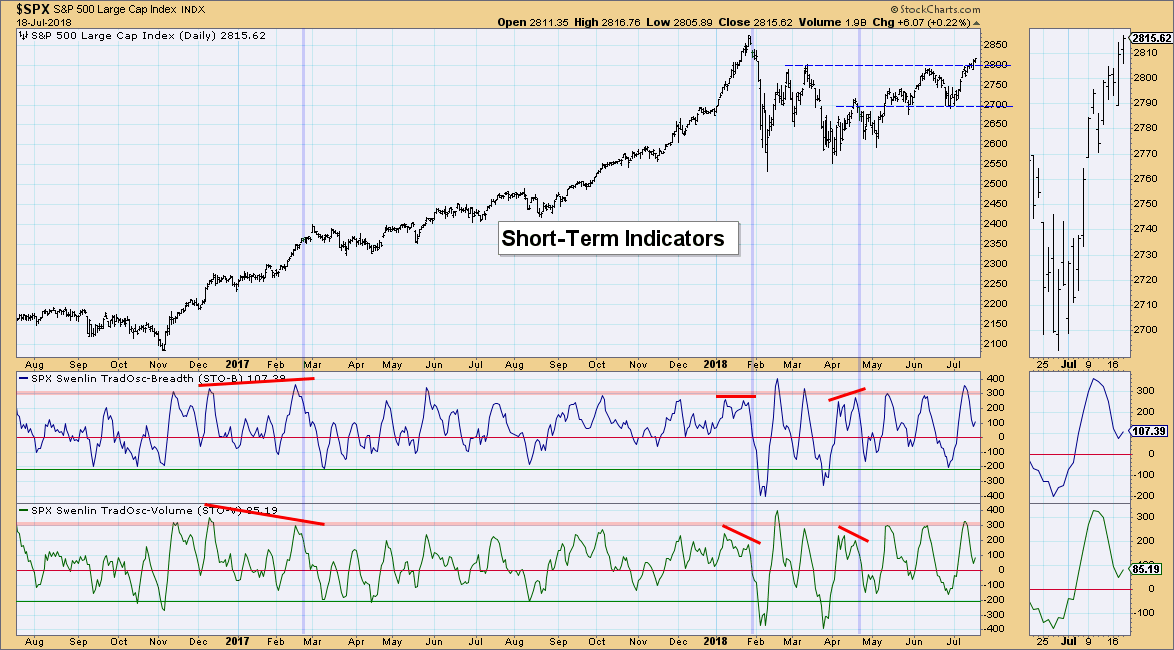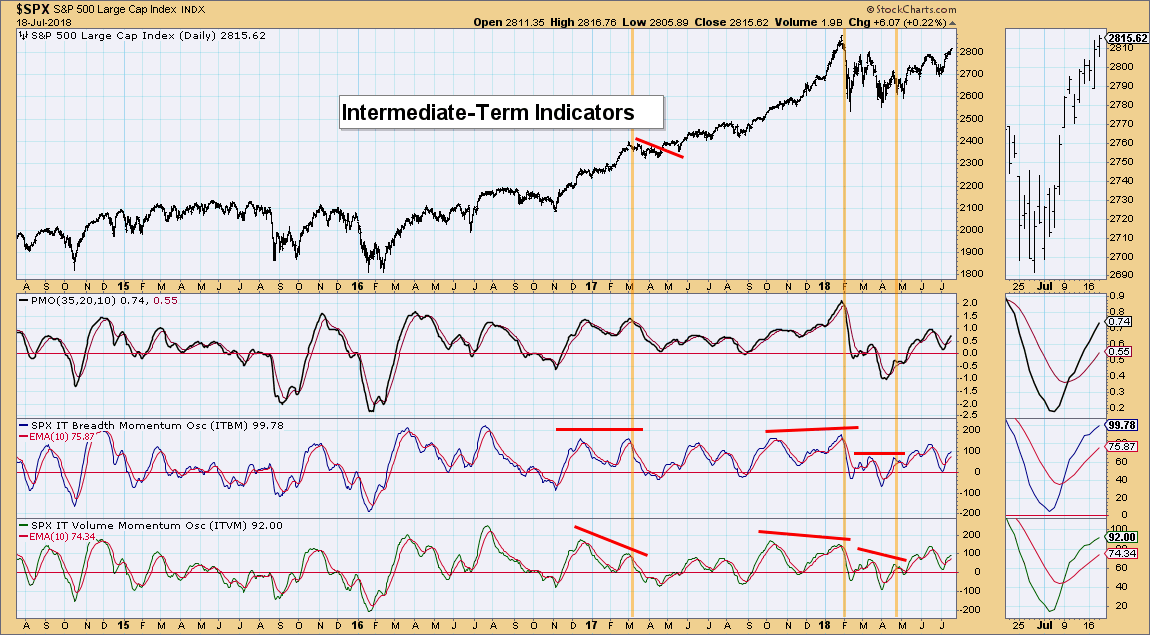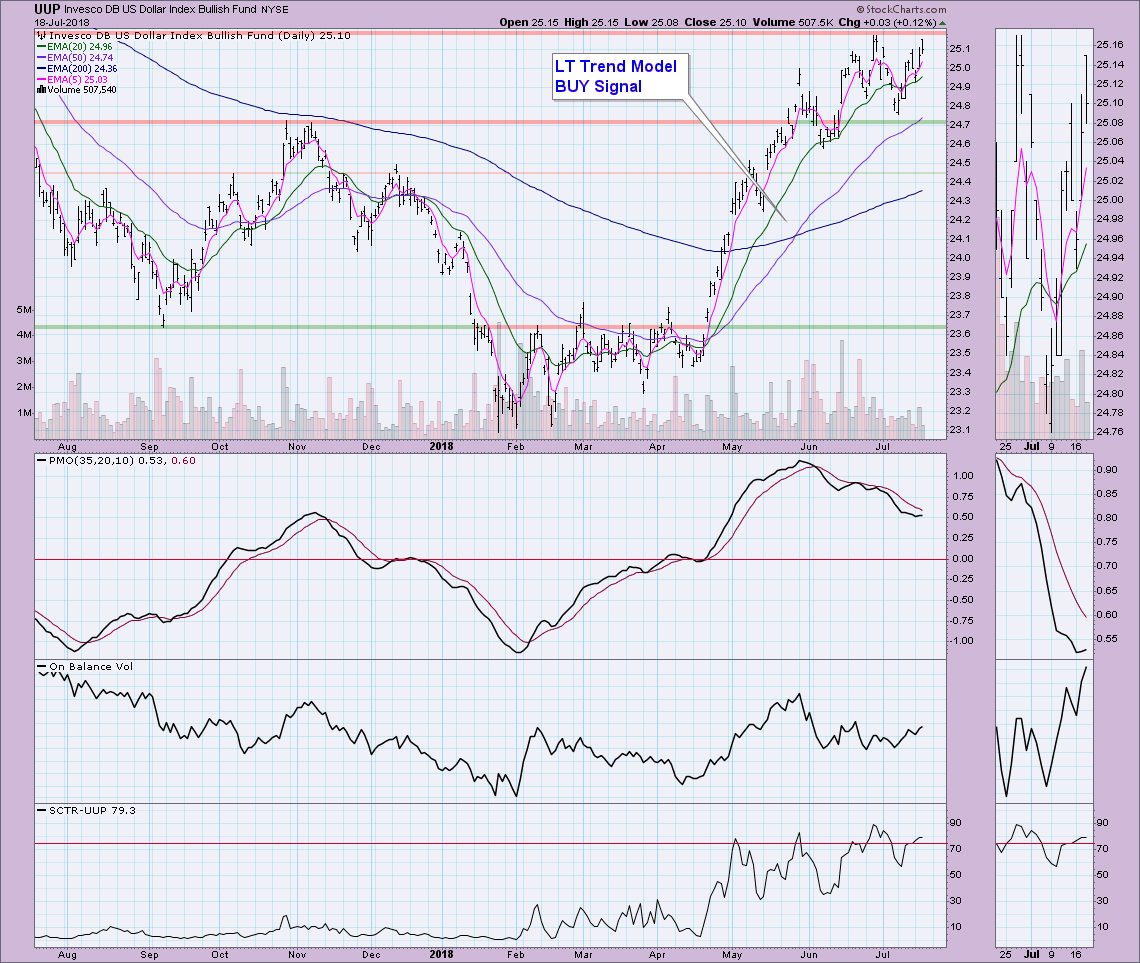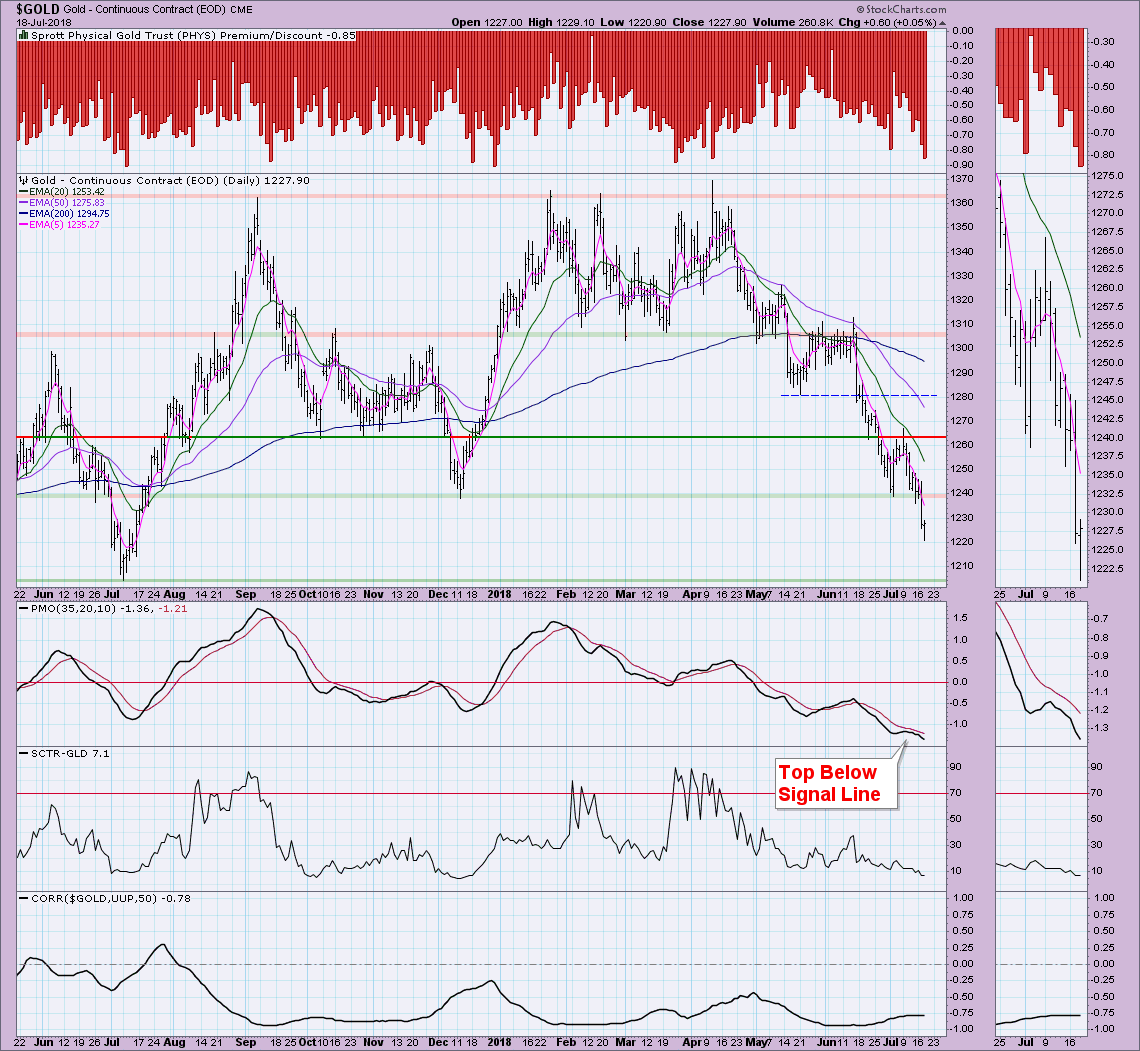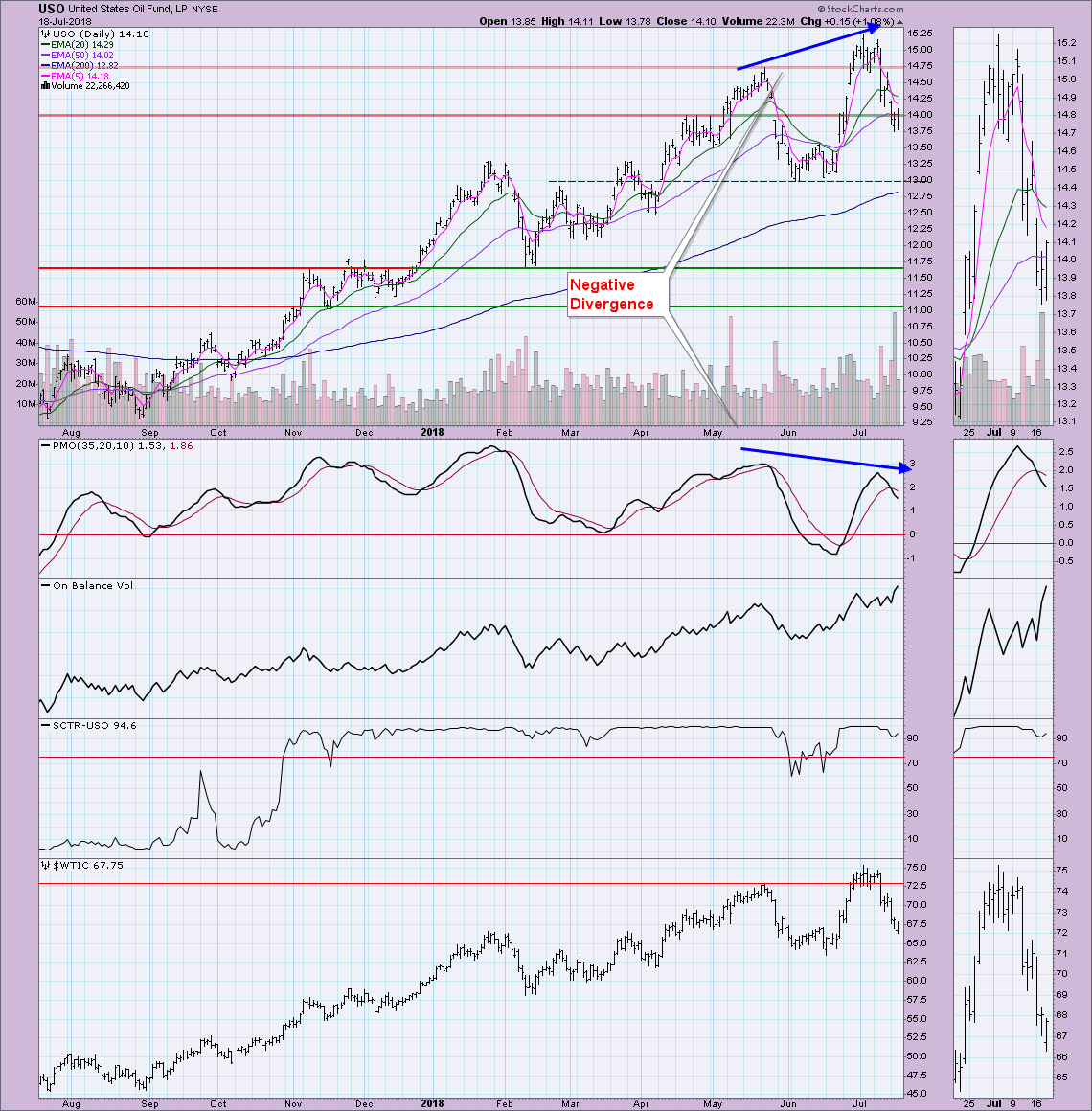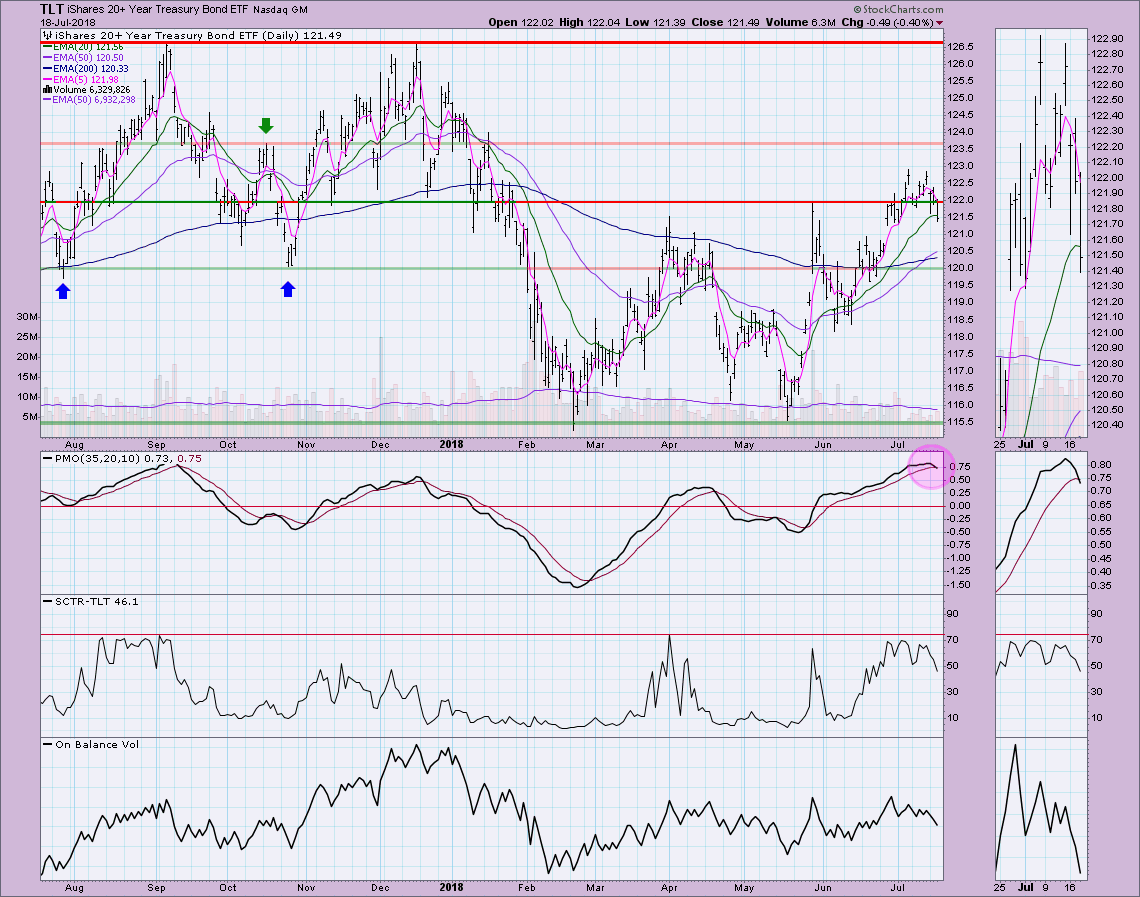
 The quick drop of short-term indicators is a case in point on how "oscillators must oscillate" and that overbought conditions in a strong bull market can unwind through consolidation and are therefore, not necessarily a precursor to doom and gloom. I've been writing about these indicators frequently over the past week and half and in each instance I have reiterated these concepts. At this time, we are waiting on positive crossovers of weekly PMOs to make way for Scoreboards that are all "green" or on BUY signals.
The quick drop of short-term indicators is a case in point on how "oscillators must oscillate" and that overbought conditions in a strong bull market can unwind through consolidation and are therefore, not necessarily a precursor to doom and gloom. I've been writing about these indicators frequently over the past week and half and in each instance I have reiterated these concepts. At this time, we are waiting on positive crossovers of weekly PMOs to make way for Scoreboards that are all "green" or on BUY signals.

The DecisionPoint Weekly Wrap presents an end-of-week assessment of the trend and condition of the stock market (S&P 500), the U.S. Dollar, Gold, Crude Oil, and Bonds.
SECTORS
Each S&P 500 Index component stock is assigned to one, and only one, of 10 major sectors. This is a snapshot of the Intermediate-Term and Long-Term Trend Model signal status for those sectors.

STOCKS
IT Trend Model: BUY as of 5/11/2018
LT Trend Model: BUY as of 4/1/2016
SPY Daily Chart: Price is ready to test all-time highs. The PMO is rising nicely, along with all other indicators which suggests to me those highs will most certainly be tested soon.
Short-Term Market Indicators: It took only a few days of consolidation to clear overbought conditions on the Swenlin Trading Oscillators (STOs). In fact, price was in a rising trend while these conditions were cleared. This tells me there is internal strength here. With indicators in mostly neutral territory, they are more than ready to accommodate some upside price action.
Intermediate-Term Market Indicators: These continue to look healthy and have yet to become overbought. This bodes well for the intermediate term.
Conclusion: Overbought indicators have cleared and moved neutral. Both intermediate-term and short-term indicators have room to support more upside price action and a likely move to test all-time highs. The SPY is showing increasing positive momentum that is accompanied by good volume. Easy to be bullish right now.
DOLLAR (UUP)
IT Trend Model: BUY as of 4/24/2018
LT Trend Model: BUY as of 5/25/2018
UUP Daily Chart: UUP is attempting a move above overhead resistance. I've been neutral to bearish on the Dollar, but it appears it may be ready to make that breakout given the new PMO bottom and rising OBV and SCTR. This level needs to be broken or we could have a double-top brewing.
GOLD
IT Trend Model: Neutral as of 5/2/2018
LT Trend Model: SELL as of 6/22/2018
GOLD Daily Chart: Gold is out of favor and given price action, I suspect it will remain so. If we get the breakout on the Dollar that I'm expecting, Gold will suffer more injury. I've been calling for a drop to the 1200 level and that seems perfectly reasonable when you see the PMO and SCTR declining sharply. The only possible 'good news' here would be the ever increasing discounts on $PHYS. This means sentiment is bearish and sentiment being contrarian, that would suggest a rebound in Gold. The other technicals on Gold are so negative, I don't think that sentiment is going to matter. We could see even deeper discounts.
CRUDE OIL (USO)
IT Trend Model: BUY as of 6/26/2018
LT Trend Model: BUY as of 11/2/2017
USO Daily Chart: After completing a negative divergence with the PMO, price declined sharply. While the PMO SELL signal is bearish, the SCTR and volume remain positive. If I weren't seeing a strong SCTR and rising OBV, I would be bearish without hesitation on Oil. However, we are seeing that building strength. I still suspect that price will test $13.50 before a return rally given the very negative PMO configuration and the recent ST Trend Model Neutral signal that triggered when the 5-EMA crossed below the 20-EMA.
BONDS (TLT)
IT Trend Model: BUY as of 6/1/2018
LT Trend Model: SELL as of 2/8/2018
TLT Daily Chart: A new PMO SELL signal was triggered today on TLT on the breakdown below support along the April/May tops. We did see a new Long-Term Trend Model BUY signal when the 50-EMA crossed above the 200-EMA, but I would look for price to continue lower on this overbought PMO SELL signal. The 200-EMA could provide nice support which wouldn't damage that LTTM BUY signal. Look for a continued decline on TLT to best case support at the 200-EMA and worst case support around $120.
Technical Analysis is a windsock, not a crystal ball.
Happy Charting!
- Erin
**Don't miss any of the DecisionPoint commentaries! Go to the "Notify Me" box toward the end of this blog page to be notified as soon as they are published.**
NOTE: The signal status reported herein is based upon mechanical trading model signals, specifically, the DecisionPoint Trend Model. They define the implied bias of the price index based upon moving average relationships, but they do not necessarily call for a specific action. They are information flags that should prompt chart review. Further, they do not call for continuous buying or selling during the life of the signal. For example, a BUY signal will probably (but not necessarily) return the best results if action is taken soon after the signal is generated. Additional opportunities for buying may be found as price zigzags higher, but the trader must look for optimum entry points. Conversely, exit points to preserve gains (or minimize losses) may be evident before the model mechanically closes the signal.
Helpful DecisionPoint Links:
DecisionPoint Shared ChartList and DecisionPoint Chart Gallery
Price Momentum Oscillator (PMO)
Swenlin Trading Oscillators (STO-B and STO-V)


